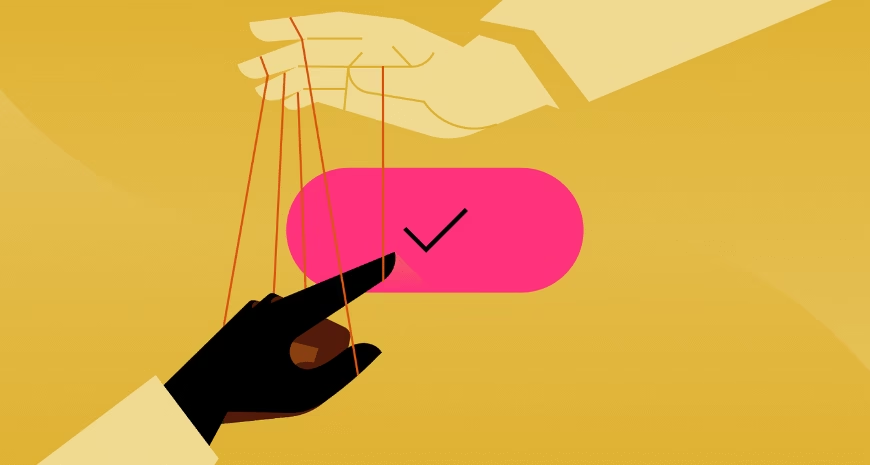We have all been there. You’re trying to unsubscribe from a newsletter, but the button is nowhere to be found, or it leads you through a labyrinth of clicks. Perhaps you’re checking out online, and suddenly, an extra item has appeared in your cart, or a pre-ticked box has signed you up for a premium service you never intended to purchase. That fleeting moment of confusion, followed by a sigh of resignation or frustration, is often no accident. It’s the subtle, yet pervasive, influence of what are increasingly known as “deceptive design patterns.”
These aren’t just minor annoyances; they are carefully crafted digital traps, design techniques woven into user interfaces that subtly, or sometimes overtly, manipulate us into taking actions that may not align with our best interests. They exploit our cognitive biases, our busy schedules, and even our inherent politeness to drive outcomes that primarily benefit businesses, often at the expense of our autonomy and understanding. “It’s the digital equivalent of a magician’s trick, but instead of entertainment, it’s about extraction.”
The Unseen Strings: What Are Deceptive Patterns?
At their core, deceptive patterns are design elements that nudge, coax, or outright trick users into actions that disproportionately benefit the company employing them. This can manifest through misleading language, confusing layouts, or even emotional manipulation that coerces users into making decisions they might otherwise avoid. The term itself was popularized by user experience researcher Harry Brignull in 2010, bringing a much-needed spotlight to these often-unethical design practices.
Consider the common manifestations of these digital sleights of hand. There’s Obstruction, where a company makes it painstakingly difficult for users to opt out of services or locate crucial information. Imagine trying to cancel a subscription, only to find the “unsubscribe” link buried deep within a forgotten corner of a website, or requiring a phone call during specific business hours. It’s designed to wear down your resolve. Then there are Visual Tricks, where color schemes, font sizes, or button placements are used to mislead. A “Yes” button might glow brightly in a prominent color, while the “No” option is faded, tiny, or tucked away, making the desired action visually dominant and the alternative almost invisible. This isn’t just about aesthetics; it’s about guiding your eye, and your finger, towards a pre-ordained choice.
We also encounter Nagging, the relentless digital persistence that continuously prompts users to accept offers or permissions they have previously declined. It’s the pop-up that reappears moments after you’ve dismissed it, or the persistent banner urging you to enable notifications despite your clear disinterest. This tactic relies on sheer attrition, hoping you’ll eventually give in just to make it stop. More insidious are Emotionally Manipulative Designs, which guilt-trip users into compliance. Picture a pop-up asking you to sign up for a discount, with the option to decline phrased as, “No thanks, I don’t like saving money.” Such phrasing isn’t just cheeky; it’s a calculated attempt to shame you into a decision. And finally, there’s Sneaking, perhaps one of the most financially impactful patterns, where items are automatically added to your shopping cart without your explicit consent, forcing you to manually remove them before completing your purchase. It preys on the assumption that you won’t meticulously review every detail before clicking “buy.” “They prey on our habits, our haste, and sometimes, our inherent desire to be polite.”
The Unseen Architects: Who Employs These Tactics?
Deceptive patterns are not confined to the shadowy corners of the internet; they are alarmingly prevalent across various sectors, particularly in e-commerce, social media, and subscription services. While it might be tempting to imagine these as the exclusive domain of lesser-known entities, even industry giants have faced significant scrutiny. Amazon, for instance, has been cited for making it notoriously challenging for users to unsubscribe from services like Prime, often requiring multiple steps and obscure navigation. Netflix has employed “forced continuity,” automatically charging users after a free trial concludes without sufficiently clear notifications or easy cancellation pathways. Social media platforms, too, have been implicated in “friend spamming,” leveraging users’ contact information without explicit consent to send invitations, often blurring the lines between genuine connection and aggressive growth tactics.
These practices are far from exclusive to large corporations. Smaller businesses, eager to boost conversion rates and user engagement, may also adopt deceptive patterns, sometimes unknowingly, sometimes as a perceived shortcut to success. The allure of quick gains can overshadow the long-term damage to user trust and brand reputation. “From the behemoths of Silicon Valley to the nimble startups, the temptation to nudge, or even shove, users in a desired direction can be overwhelming.”
The Shadow on Data Protection: A Breach of Trust and Law
The implications of deceptive patterns stretch far beyond a mere frustrating user experience; they cast a long, dark shadow over the critical domains of data protection and privacy. Many of these manipulative practices directly contravene consumer protection laws and regulations meticulously crafted to safeguard user data and ensure informed consent.
Consider the legal frameworks designed to protect us. In the European Union, the formidable General Data Protection Regulation (GDPR) stands as a beacon, alongside the Unfair Commercial Practices Directive (UCPD), both aiming to shield consumers from misleading and aggressive practices. Companies found employing deceptive patterns can face not only hefty fines that stretch into millions but also significant legal repercussions, including class-action lawsuits. The spirit of GDPR, particularly its emphasis on explicit, unambiguous consent, is directly undermined when users are tricked into agreeing to data collection or sharing, they would otherwise refuse. “When consent is coerced, or hidden in plain sight, it ceases to be true consent at all.”
Beyond the legal ramifications, the use of deceptive patterns inflicts profound damage on the most valuable currency in the digital economy: consumer trust. When users feel manipulated, deceived, or exploited, their willingness to engage with a brand, share information, or make purchases evaporates. This erosion of trust can lead to long-term, irreparable harm to a company’s reputation, making it exponentially harder to attract new customers and retain existing ones. A brand built on trickery is a brand built on sand.
Moreover, deceptive patterns disproportionately affect vulnerable populations. This includes individuals with lower digital literacy, those who may not be fluent in the language of the interface, or even those simply operating under severe time constraints. The elderly, individuals with cognitive impairments, or busy parents juggling multiple responsibilities are often more susceptible to these tactics, making it harder for them to discern manipulative design from genuine choice. This raises profound ethical concerns about exploitation and underscores the urgent need for more robust protections for these groups. “For those already navigating a complex digital world, these patterns aren’t just an inconvenience; they’re a barrier to genuine choice.”
The Shifting Tide: Awareness, Regulation, and the Path Forward
Fortunately, governments and regulatory bodies worldwide are increasingly recognizing the dangers posed by deceptive patterns and are actively working to curb their proliferation. Recent legislative efforts signal a growing commitment to banning such practices outright. For instance, California has expanded its Consumer Privacy Act (CCPA) to specifically address misleading consent practices related to data collection, empowering consumers with greater control. Similarly, the Federal Trade Commission (FTC) in the U.S. has explicitly signaled that combating deceptive design is a top priority, indicating a more aggressive enforcement stance.
This rising tide of awareness, fueled by consumer complaints and advocacy groups, combined with tightening regulations, means companies will be compelled to fundamentally rethink their design strategies. The era of veiled manipulation is slowly but surely drawing to a close. The path forward lies in embracing transparency and ethical design principles. By prioritizing clear communication, intuitive interfaces, and genuine user autonomy, businesses can foster stronger, more authentic relationships with their consumers. This approach not only ensures compliance with evolving legal standards but also cultivates a loyal customer base built on mutual respect and trust. “The tide is turning, not just in boardrooms, but in the collective consciousness of consumers.”
Conclusion: The Imperative of Ethical Design
Deceptive patterns represent a troubling, yet increasingly visible, trend in digital design that, for too long, has prioritized corporate profit over user welfare. As more consumers become acutely aware of these manipulative tactics, there is an undeniable and growing demand for transparency, honesty, and ethical practices in user experience design. Companies must navigate this evolving landscape with immense care, balancing their legitimate business objectives with the paramount need for responsible design that profoundly respects user autonomy and meticulously complies with evolving legal frameworks. By doing so, they can not only avoid potential legal pitfalls and crippling fines but, more importantly, build lasting trust and foster enduring customer relationships. In the grand tapestry of the digital age, trust is the most fragile, yet most valuable, thread.
Author: Emmanuel K. Gadasu
(CEH, CDPS, CIPM, CIPP/E, AGIPS, BSc IT, MSc IT and Law, LLB*)
The writer is a Data Protection and Cybersecurity Consultant, Practitioner and Trainer, Member, IIPGH.
For further comments, Call/WhatsApp/Telegram +233 24391 3077 or via email: ekgadasu@gmail.com.
LinkedIn: https://www.linkedin.com/in/ekgadasu/
Facebook: https://web.facebook.com/ekgadasu





